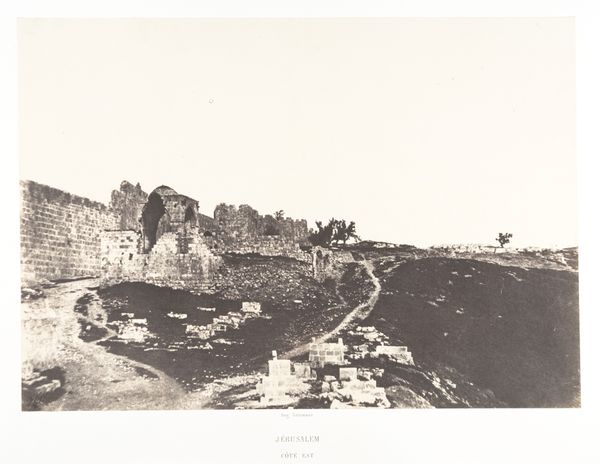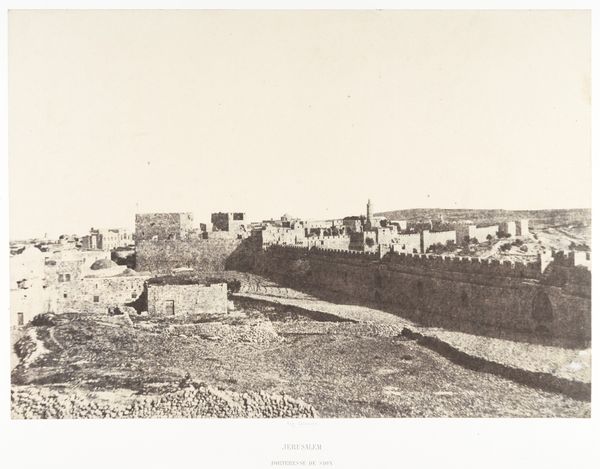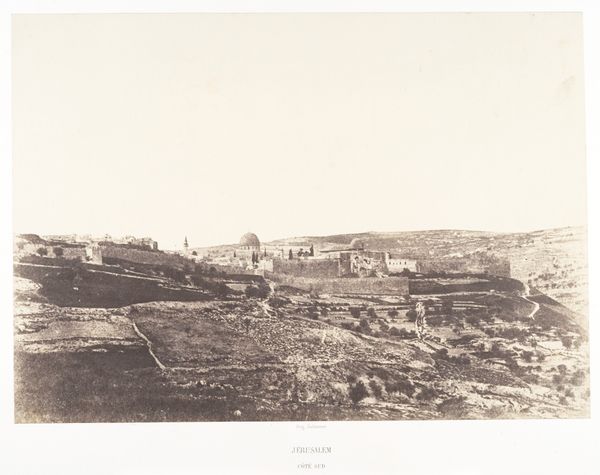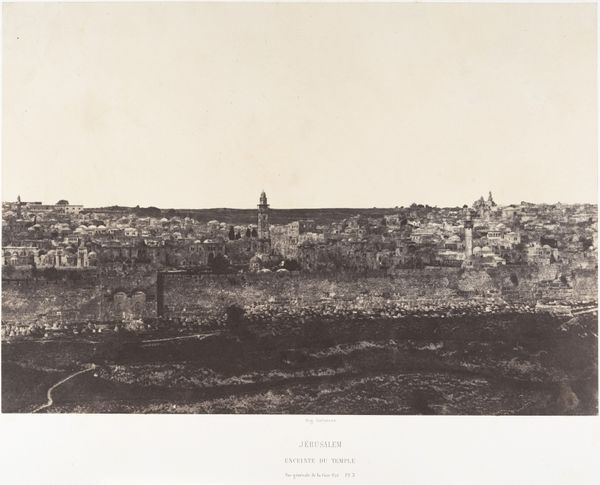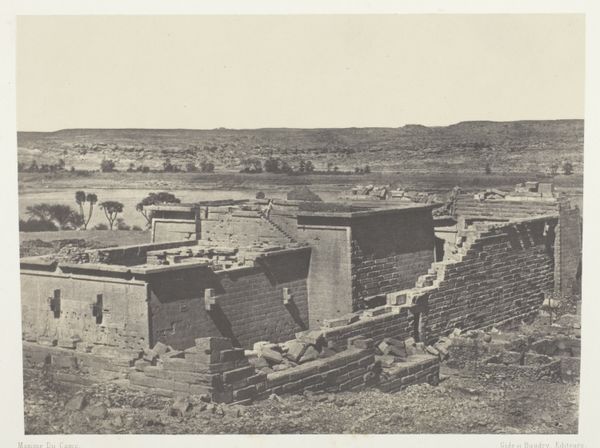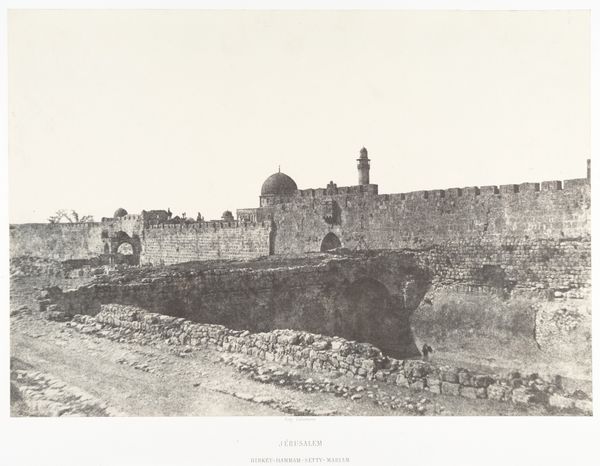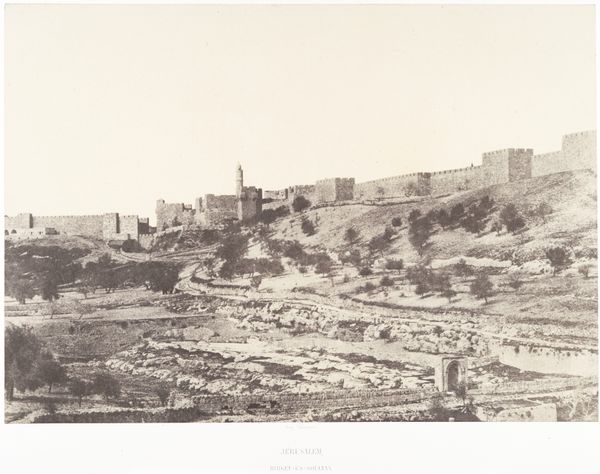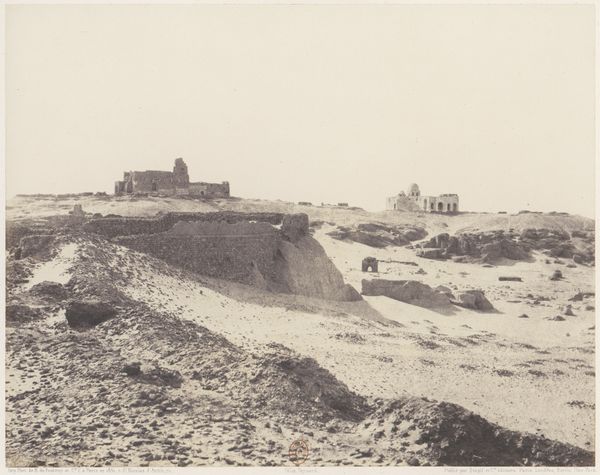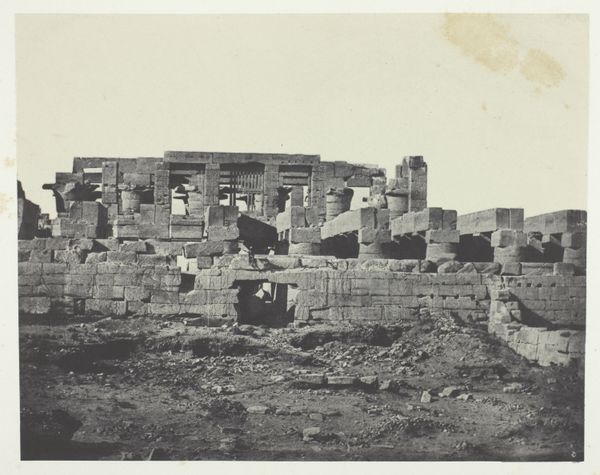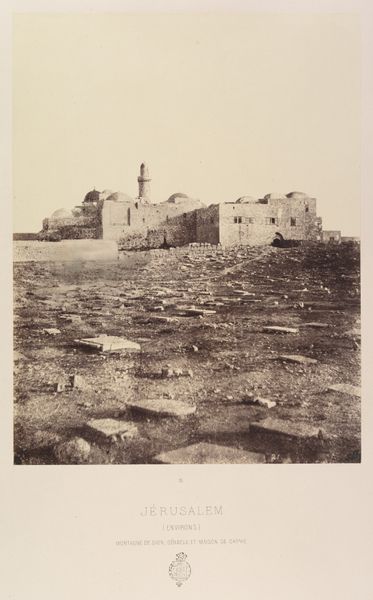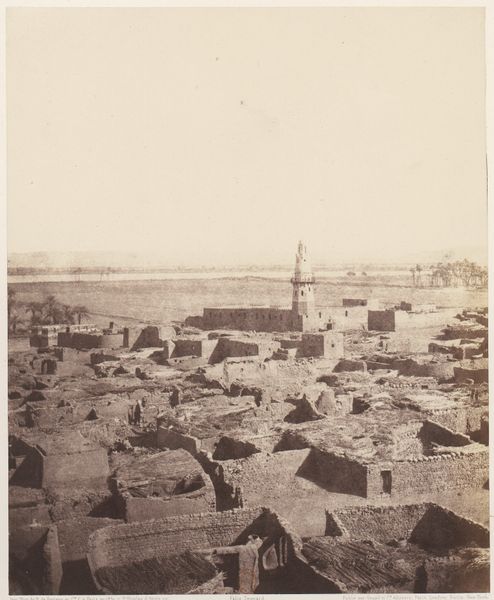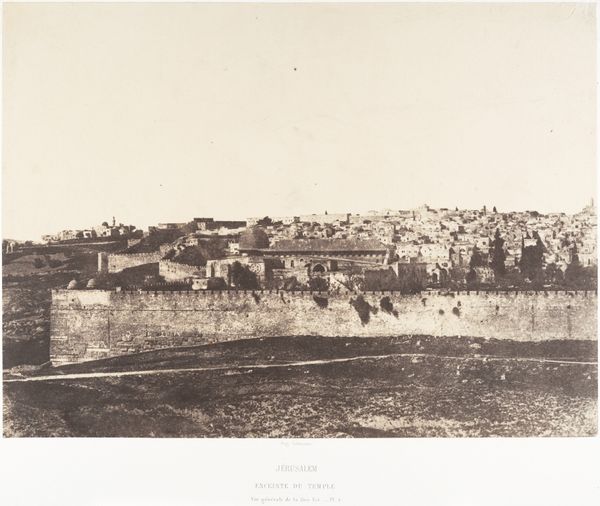
photography, architecture
#
landscape
#
photography
#
arch
#
architecture
Dimensions: Image: 23.7 x 32.8 cm (9 5/16 x 12 15/16 in.) Mount: 44.6 x 60.1 cm (17 9/16 x 23 11/16 in.)
Copyright: Public Domain
Editor: This is Auguste Salzmann's photograph, "Jérusalem, Birket-Mamillah," created sometime between 1854 and 1859. Looking at the composition, I am struck by how the strong horizontal lines of the wall seem to divide the frame. What visual cues do you find most compelling? Curator: I’m drawn to how Salzmann uses light and shadow to define form. Notice how the stark contrast highlights the textures of the stone walls, emphasizing their imposing structure, and similarly picks out the individual tombstones in the foreground. Do you perceive a visual hierarchy at play? Editor: Yes, I think the strategic placement of the light emphasizes the foreground tombstones and the solid structure of the wall above, drawing my eye upwards and then horizontally along it. Does the architecture here serve any purpose, formalistically speaking? Curator: Consider the photograph's internal logic. The wall serves as a powerful line, grounding the composition while its imposing nature also acts to contain the visual space. The photographer's intention, formalistically, appears to be an exercise in organizing these lines of geometric structures to provide stability and solidity in the overall effect. Would you agree? Editor: I do. The architecture creates a clear structure within the picture, yet its visual language is subdued and relies upon texture to provide interest. Is there anything you have learned in your work looking at the photograph from the era? Curator: That it presents a meticulous engagement with form, and by doing so it constructs meaning primarily through internal arrangements rather than exterior references. What I take away is the quietness and contemplative essence embedded within this seemingly simple construction. Editor: That's so interesting. This close visual inspection has opened my eyes to the inherent formal qualities within this historical document. Thank you.
Comments
No comments
Be the first to comment and join the conversation on the ultimate creative platform.

